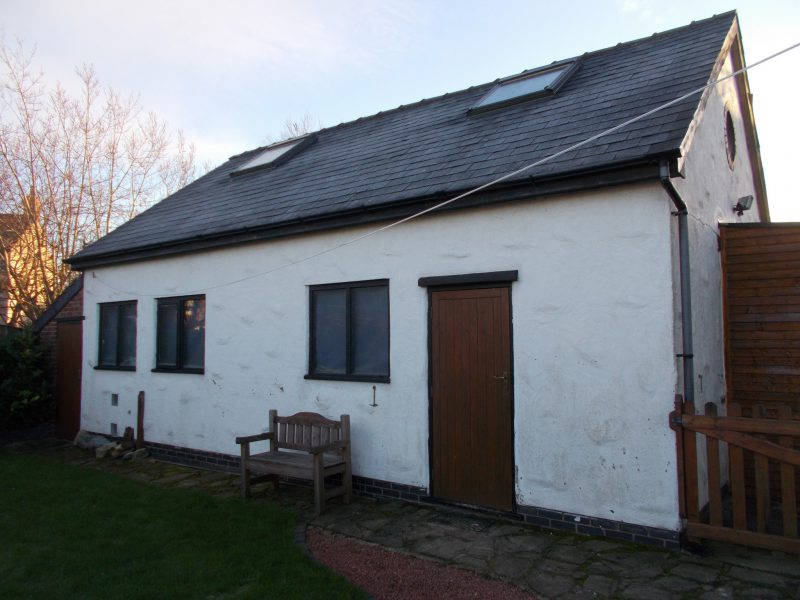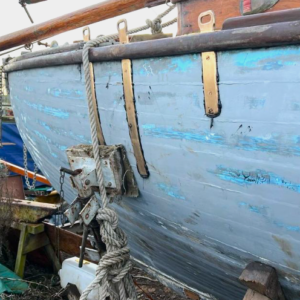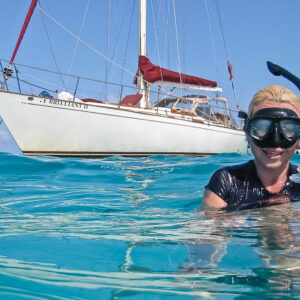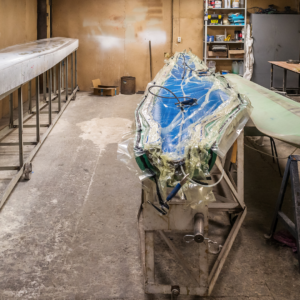Projects: Longbow – how to survive a disaster
The British team attempting to break the water speed record in a jet-powered hydroplane are well aware of the risks, so the pilot will be able to survive a crash in a purpose-built escape capsule – made from epoxy composite, of course.
The Longbow project, with WEST SYSTEM epoxy materials sponsored by Wessex Resins & Adhesives and its associated customer, Robbins Timber, is a purpose-built hydroplane that will be powered by a pair of jet engines. The aim is to hurl this 9-metre wooden hull along in excess of 317 mph (the current record) and reach the finishing line intact. This will snatch the record away from Australia, where it has remained unmatched since 1978.
However, harnessing 6,800lbs of thrust – double that of the current record holder Spirit of Australia– is not without considerable risk, so the designers are incorporating a special escape capsule into the structure. Should the worst happen, the capsule with its strapped-in driver should be flung clear of the wreckage and remain afloat until help can arrive.
That strapped-in driver will be Royal Navy Pilot Lt David-John Gibbs, who first trained on Sea King helicopters before moving over to fixed wing aircraft. He is also an accomplished powerboat racer so has the experience required to push the hydroplane to its limits.
Construction of the hydroplane began in August of 2018 in a home workshop in Lancashire in the UK. The team, which was also responsible for restoring Donald Campbell’s iconic jet hydroplane Bluebird K7, recognised the challenges presented by the shape of Longbow’s wooden hull and its specific purpose.

“We had to consider what would happen if an accident were to occur at high speed,” says project co-ordinator David Aldred. “The result would be a compromised hull that has possibly lost engine covers or had compartments ripped open, with water flooding in.”
The team knew that solutions in other types of high-speed racing craft probably wouldn’t work with Longbow, mainly due to her configuration.
“There is a considerable design difference between an Unlimited Circuit Racing hydroplane and an Outright Water Speed Record jet hydroplane,” David explains. “The former carries a relatively small turboprop gas turbine in a very wide hull, one specifically built to go around corners as fast as possible. This lends itself to an integral cockpit design as the hull’s large internal volume provides enough reserve buoyancy to keep the craft afloat for some time after a breach.”
However, the problem gets trickier with the hull shape needed for straight-line record attempts. The much heavier engines need a relatively narrow hull intended to keep any lift to a minimum so the hydroplane doesn’t become airborne at speed.
“As such, a damaged jet hydroplane may well have insufficient buoyancy to keep it afloat after a serious crash,” David says. “An integral cockpit could possibly take the driver with it to the bottom of the lake. Even with breathing apparatus on board, going down deep in a damaged boat could still prove fatal.”

David-John Gibbs, the driver for Longbow.
Several ideas were put forward during the design stage and whilst most had merit, there was also the challenge of cost and practicality.
“Some asked: ‘Why not just have an ejector seat?’ We did approach British ejection seat manufacturer Martin Baker for an option. They explained that whilst a seat ejected from ground level was quite feasible there was no guarantee that it would travel vertically. If the seat shot off at an angle towards the shore the company felt that the potential liability to a third party would be unacceptable, so they respectfully declined to help with the project.”
The team turned their attention back to the two remaining options. The first was to create an integral cockpit in a hull designed to stay afloat as long as possible. The second was the ‘drag boat’ option, where the hull self-destructs during a crash so as to release the capsule on an escape trajectory. By making the capsule from composite, it will prove resistant to damage and continue to float if breached.
“The amount of reserve buoyancy within that capsule will allow it to remain on the surface even when fully flooded,” David remarks. “In this respect a timber hull with a separating composite capsule fulfils all our design requirements, so that is the route we will be taking.”
The capsule is being designed by freelance advanced composites engineer Paul Martin, who has worked for McLaren and both the Bloodhound and Aussie Invader. We’ll bring you the details of how WEST SYSTEM epoxy is being used to make the capsule tough and durable when the build begins.

David-John Gibbs, the driver for Longbow.
In the meantime, you can follow the progress of the rest of the project at: www.jet-hydroplane.uk



